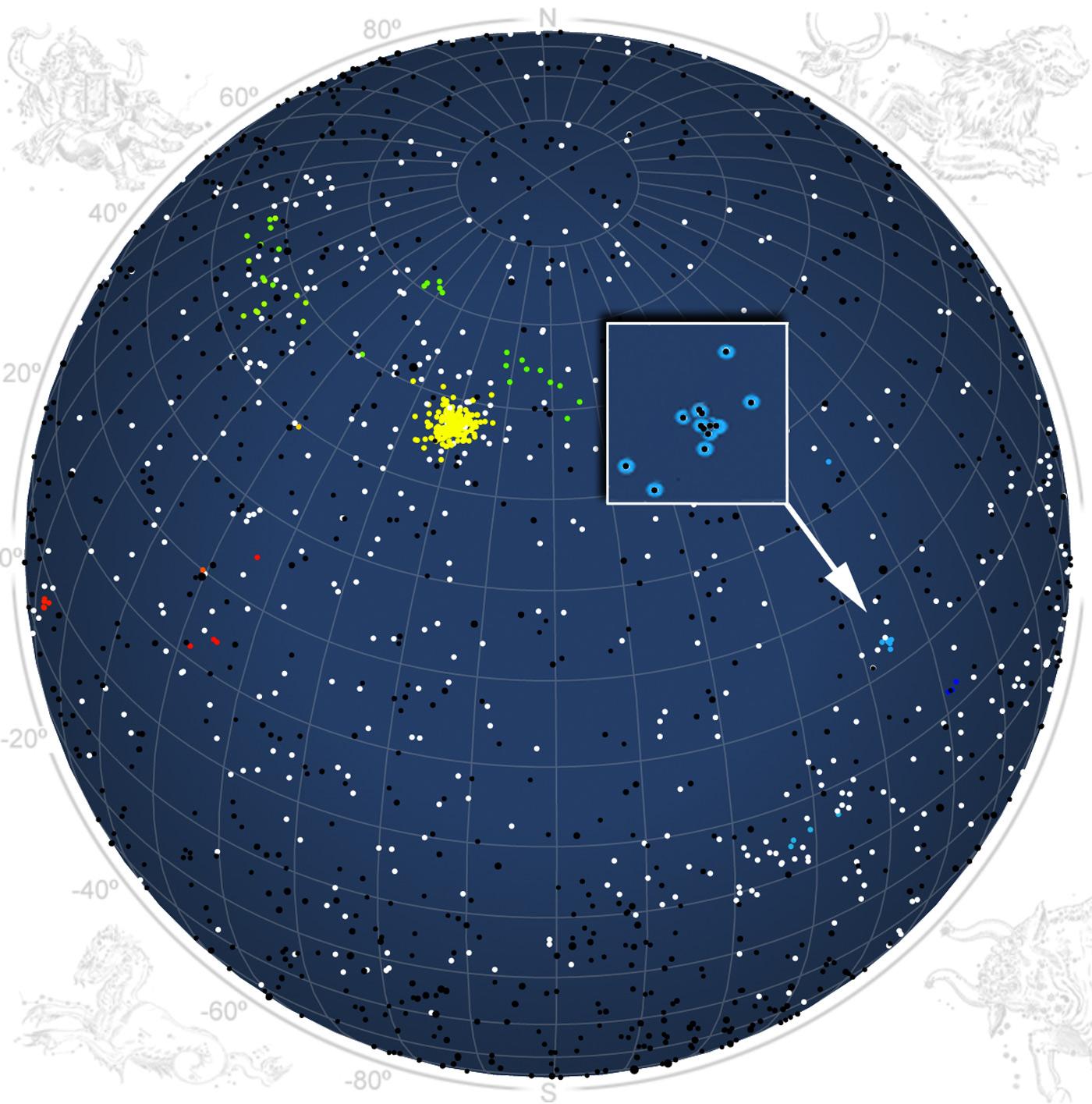
Mountain View, CA - A bright comet described in a circa 553 A.D. book, "Histories of the Wars", may have been responsible for a brief and unexpected meteor shower in April 2019, so conclude researchers in a paper published this week in Planetary and Space Science.
"That comet appears to be on its way back," said meteor astronomer Peter Jenniskens of the SETI Institute. "We don't know when it will arrive back in the inner solar system, but the meteor shower can help astronomers search for it."
Jenniskens leads a night sky video surveillance project called CAMS (Cameras for Allsky Meteor Surveillance). There are CAMS networks now spread across the globe that use low-light video cameras to triangulate the path of meteors in the atmosphere and calculate the meteoroid orbit in space.
Daily maps of the approach direction of meteors are posted on this public website: http://cams.seti.org/FDL/. On the map of April 22, 2019, Jenniskens spotted a compact shower called the 15-Bootids. The shower was last seen in 2013. This year, the CAMS network in the Belgium-Netherlands-Luxembourg (BeNeLux) region of Europe measured nine 15-Bootid meteoroid orbits.
"We only detected the shower over a 3-hour period in the night of April 21/22, even though all night was clear," said CAMS BeNeLux coordinator Carl Johannink. "That means Earth crossed a narrow trail of comet debris."
Confirmation of the unusual shower activity came from a second CAMS network, the United Arab Emirates Astronomical Camera Network of the International Astronomical Center in Abu Dhabi. Co-author Mohammad Odeh reports that they detected four 15-Bootids in that same brief time period.
"The measured orbits are those of a long-period comet," said Jenniskens, "We can confirm that Earth was briefly doused by a stream of debris ejected in the previous return of this comet during the Dark Ages."
Initially, that debris traveled along with the comet. Some meteoroids followed a shorter orbit, returning early, while other meteoroids will return much later than the comet. This created a thin stream that dances in and out of Earth's orbit under the gravity of the Sun and planets.
"We confirmed that the stream was also near Earth's orbit in 2013 and calculated that the next encounter with this stream will be in 2027," says co-author Esko Lyytinen from Finland.
As far as encounters with the debris streams of long-period comets go, this stream was wide, suggesting a big comet may have been responsible. Because the measured orbits were relatively short, the meteoroids seem to be arriving ahead of the comet.
In a search for past records of comets moving on similar orbits, the researchers came across the Greek and Latin texts of "History of the Wars", that describe a bright comet that was seen in Europe for more than 40 days in 539 A.D., during Europe's Dark Ages. Chinese characters in the historic Wei Shou and Sui Shou texts from 554 and 636 AD also described the comet. In those texts, the comet is said to have moved through two constellations, which allowed astronomers to calculate an approximate orbit.
"There is enough uncertainty about those long ago observations that the orbit measured by the 15-Bootid meteoroids could well describe the path of that comet," says Lyytinen.
In the paper, co-author Nick Moskovitz of Lowell Observatory describes in what reaches of the comet orbit a dedicated search program could look to find the comet years ahead of it becoming bright enough to be seen by the regular search programs.
The article can be found here:
https://www.sciencedirect.com/science/article/pii/S0032063319304349
The CAMS project website:
http://cams.seti.org





